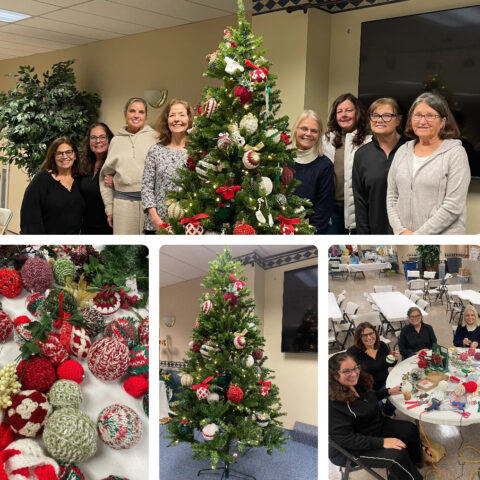 Pope Leo XIV receives Patriarch Bartholomew of Constantinople at the Vatican on May 30, 2025. / Vatican Media
Pope Leo XIV receives Patriarch Bartholomew of Constantinople at the Vatican on May 30, 2025. / Vatican Media
Vatican City, Nov 23, 2025 / 12:29 pm (CNA).
Pope Leo XIV has called on Christians to move beyond “theological controversies” that no longer serve the cause of unity and to rediscover together the faith professed at the Council of Nicaea 1,700 years ago.
In a new apostolic letter, In unitate fidei (“In the Unity of Faith”), released Nov. 23, the solemnity of Christ the King, the pope links the anniversary of the first ecumenical council to the Holy Year of 2025 and to his upcoming apostolic journey to Türkiye, where he will commemorate Nicaea’s 1700th anniversary and take part in an ecumenical event with Ecumenical Patriarch Bartholomew on Nov. 30 before traveling on to Lebanon.
“I would like this Letter to encourage the whole Church to renew her enthusiasm for the profession of faith,” the pope writes, stressing that the Nicene-Constantinopolitan Creed “for centuries… has been the common heritage of Christians, and it deserves to be professed and understood in ever new and relevant ways.”
In a strong ecumenical appeal, Leo XIV says the Nicene Creed “can be the basis and reference point” for a renewed journey toward full communion among Christians. “It offers us a model of true unity in legitimate diversity. Unity in the Trinity, Trinity in Unity, because unity without multiplicity is tyranny, multiplicity without unity is fragmentation,” he writes.
“We must therefore leave behind theological controversies that have lost their raison d’être in order to develop a common understanding and even more, a common prayer to the Holy Spirit, so that he may gather us all together in one faith and one love,” the pope continues.
“The restoration of unity among Christians does not make us poorer; on the contrary, it enriches us,” he adds, calling the goal of full visible unity “a theological challenge and, even more so, a spiritual challenge, which requires repentance and conversion on the part of all.”
‘This Creed gives us hope’
Linking Nicaea to today’s crises, Leo XIV notes that the Holy Year is dedicated to the theme “Christ our hope” and that the Nicene Creed remains a source of confidence amid war, injustice, and suffering.
“In this Holy Year, dedicated to the theme of Christ our hope, it is a providential coincidence that we are also celebrating the 1700th anniversary of the First Ecumenical Council of Nicaea,” he writes. That council, he recalls, “proclaimed the profession of faith in Jesus Christ, Son of God. This is the heart of the Christian faith.”
“In these difficult times we are living, amid so many concerns and fears, threats of war and violence, natural disasters, grave injustices and imbalances, and the hunger and misery suffered by millions of our brothers and sisters, this Creed gives us hope,” the pope says.
Leo XIV presents the letter as an invitation for all Christians “to walk in harmony, guarding and transmitting the gift they have received with love and joy,” especially through the words of the Creed: “I believe in one Lord Jesus Christ, the Only Begotten Son of God… for our salvation he came down from heaven.”
Nicaea and the heart of the Christian faith
The pope devotes much of In unitate fidei to explaining the historical and theological context of the Council of Nicaea, which met in 325 to address the Arian controversy over the divinity of Christ.
The dispute, he notes, “concerned the essence of the Christian faith,” namely the answer to Jesus’ question in the Gospel: “Who do you say that I am?” In response, the Nicene Fathers confessed that Jesus is the Son of God “in as much as he is of the substance (ousia) of the Father… ‘begotten, not made, consubstantial (homooúsios) with the Father.’”
“The Fathers of Nicaea were firm in their resolution to remain faithful to biblical monotheism and the authenticity of the Incarnation,” Leo XIV writes. By adopting terms such as “substance” and “consubstantial,” which are not found in Scripture, the Council “did not… replace biblical statements with Greek philosophy,” he explains. Rather, it sought “to affirm biblical faith with clarity and to distinguish it from Arius’ error, which was deeply influenced by Hellenism.”
“The Nicene Creed does not depict a distant, inaccessible and immovable God who rests in himself, but a God who is close to us and accompanies us on our journey in the world, even in the darkest places on earth,” the pope writes. “His immensity is revealed when he makes himself small, laying aside his infinite majesty to become our neighbor in the little ones and in the poor. This revolutionizes pagan and philosophical conceptions of God.”
Leo XIV also highlights the Nicene emphasis on the full humanity of Christ, noting the clarification that the Word “became man.” Against teachings that suggested the Logos only assumed a body, he recalls that later councils made explicit that “in Christ, God assumed and redeemed the whole human being, body and soul.”
Quoting St. Athanasius and the patristic tradition, the pope writes: “Divinization, then, is true humanization (becoming fully human). This is why human existence points beyond itself, seeks beyond itself, desires beyond itself, and is restless until it rests in God.” Only God, he adds, “in his infinity, can satisfy the infinite desire of the human heart, and for this reason the Son of God chose to become our brother and redeemer.”
A call to examine conscience
Beyond doctrine, Leo XIV insists that the Creed must shape Christian life.
“Both the liturgy and the Christian life are thus firmly anchored in the Nicene-Constantinopolitan Creed: what we profess with our mouths must come from the heart so that we may bear witness to it with our lives,” he writes. “We must therefore ask ourselves: What about our interior reception of the Creed today? Do we experience that it also affects our current situation? Do we understand and live out what we say every Sunday? What do these words mean for our lives?”
“In this sense, the Nicene Creed invites us to examine our conscience,” the pope continues. “What does God mean to me and how do I bear witness to my faith in him? Is the one and only God truly the Lord of my life, or do I have idols that I place before God and his commandments?”
He ties this examination to care for creation and social justice, asking: “How do I treat creation, the work of his hands? Do I exploit and destroy it, or do I use it with reverence and gratitude, caring for and cultivating it as the common home of humanity?”
Echoing the Second Vatican Council, Leo XIV notes that “for many people today, however, God and the question of God have almost no meaning in their lives,” and that Christians themselves bear some responsibility, since “they do not bear witness to the true faith; they hide the true face of God with lifestyles and actions that diverge from the Gospel.”
Instead of proclaiming a merciful God, he laments, “a vengeful God has been presented who instils terror and punishes.”
Following Christ and loving one another
At the center of the Creed, the pope writes, is the confession of Jesus Christ as Lord and God.
“The profession of faith in Jesus Christ, our Lord and God is the center of the Nicene-Constantinopolitan Creed. This is the heart of our Christian life,” he says. “For this reason, we commit to follow Jesus as our master, companion, brother and friend.”
Following Christ, he continues, “is not a wide and comfortable path,” but “this often demanding or even painful path always leads to life and salvation.”
“If God loves us with all his being, then we too must love one another,” Leo XIV writes. “We cannot love God whom we do not see without loving our brother and sister whom we do see. Love for God without love for neighbor is hypocrisy; radical love for our neighbor, especially love for our enemies, without love for God, requires a ‘heroism’ that would overwhelm and oppress us.”
“In the face of disasters, wars and misery, we bear witness to God’s mercy to those who doubt him only when they experience his mercy through us,” he adds.
Ecumenism as ‘sign of peace and instrument of reconciliation’
Recalling the teaching of Vatican II and St. John Paul II’s 1995 encyclical Ut unum sint, the pope says that in a divided world “the one universal Christian community can be a sign of peace and an instrument of reconciliation, playing a decisive role in the global commitment to peace.”
He notes that, while full visible unity with Orthodox, Oriental Orthodox, and communities born of the Reformation has not yet been achieved, ecumenical dialogue “founded on one baptism and the Nicene-Constantinopolitan Creed” has already helped Christians recognize each other as brothers and sisters in Christ and rediscover “the one universal community of Christ’s disciples throughout the world.”
“We share the same faith in the one and only God, the Father of all people; we confess together the one Lord and true Son of God, Jesus Christ, and the one Holy Spirit, who inspires us and impels us towards full unity and the common witness to the Gospel,” he writes. “Truly, what unites us is much greater than what divides us!”
‘Come, divine Comforter’
The letter concludes with a prayer to the Holy Spirit for the renewal of faith and the healing of divisions among Christians.
“Holy Spirit of God, you guide believers along the path of history,” Leo XIV prays. “We thank you for inspiring the Symbols of Faith and for stirring in our hearts the joy of professing our salvation in Jesus Christ, the Son of God, consubstantial with the Father. Without him, we can do nothing.”
“Come, divine Comforter, source of harmony, unite the hearts and minds of believers. Come and grant us to taste the beauty of communion,” he continues. “Come, Love of the Father and the Son, gather us into the one flock of Christ. Show us the ways to follow, so that with your wisdom, we become once again what we are in Christ: one, so that the world may believe.”
Read More


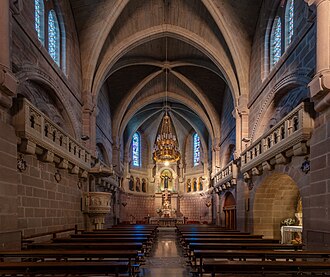




:max_bytes(150000):strip_icc():format(jpeg)/TAL-lead-image-NORTHPOLE1125-6dbbb434f15840139b3ee9b3cd61b6e6.jpg)
![Hundreds of Nigerian students remain captive; Cameroon archbishop warns of church closures - #Catholic -
Parishioners at a church in Akute Ogun State, Nigeria, in June 11, 2023. / Credit: Ariyo Olasunkanmi/ Shutterstock
ACI Prensa Staff, Nov 24, 2025 / 17:41 pm (CNA).
The Catholic Church is facing a new wave of violence in Africa: In Nigeria, 265 students from a Catholic school remain captive after being kidnapped last week while an archbishop in Cameroon is threatening to close parishes if a kidnapped priest is not released.In Nigeria, Bishop Bulus Dauwa Yohanna of Kontagora told Fides: “The kidnappers are almost certainly criminals seeking illicit gain by demanding a ransom.”An official statement from the diocese, published on Nov. 23, reported that 50 minors managed to escape and reunite with their families after fleeing between Friday and Saturday following the attack. These developments were confirmed through visits and phone calls with their relatives, the statement said.However, of the 315 people initially captured, “265 remain in the hands of the kidnappers, of whom 239 are children, 14 are high school students, and 12 are members of the school staff,” the diocesan statement specified.The institution serves 430 primary school students (377 boarders and 53 day students) and 199 secondary school students, figures that, according to the diocese, “are important in helping the public understand the scale of the incident and the extensive efforts underway to account for every missing child and staff member.”Cameroon archbishop demands release of kidnapped priestThe archbishop of Bamenda, Andrew Nkea Fuanya, announced that “if Father John is not released before Nov. 26, the churches in the deanery will be closed” as a measure to pressure for the release of parish priest John Berinyuy Tatah, who was kidnapped on Nov. 15 by armed men in northeastern Cameroon along with his vicar.The faithful were informed of the possible closures in an official message read on Sunday, Nov. 23, in all parishes, the Vatican news agency Fides reported.Nkea explained that if the priest remains in the hands of his captors by that date, the parishes, schools, and Catholic institutions of the Ndop deanery will be closed. “Priests will be evacuated for their safety, and the Blessed Sacrament will be removed from the churches.”Furthermore, he warned that if the priest continues to be held captive on Nov. 28, the archbishop, the clergy, and lay faithful will march to the village of Baba I, where he is believed to be held, “and will either bring him back home or remain there until he is released,” Fides reported.The prelate denounced the frequent kidnappings of priests and pastoral workers, stating that the perpetrators “have put us against the wall, and all of this must end immediately,” noting that many laypeople have also suffered torture, violence, and extortion.According to Fides, the kidnapping was carried out by armed separatists who have proclaimed the so-called “Republic of Ambazonia” in the English-speaking northeast and southeast regions of the country. The rest of Cameroon is French-speaking.Bishop Barron: ‘The persecution is real and we must react’The situation in Nigeria has caused international outrage. The bishop of Winona-Rochester in Minnesota, Robert Barron, recently referred to the wave of attacks against Catholic communities, noting that what has happened is part of “an ongoing and long-standing persecution.”“Over the last 10 years, I think 100,000 Christians have been murdered, tens of thousands of churches burned, [and there has been a] huge displacement of the Christian population,” he said on X.After explaining that in the middle parts of the country the attacks on Christians may be motivated by a mixture of religious, tribal, or economic reasons, Barron said he did not want the appeal to mixed motives as an excuse for inaction.“Are the motives of the persecutors mixed? Sure, I’ll grant you that. There are economic or tribal elements, of course. But my overall point is: Who cares? What matters here is that our brother and sister Christians are being brutally mistreated.”Barron also appealed to the international Christian community: “Our connections in Christ to one another are deeper than our national identity.” Christians must pray, speak out, raise awareness, and ask our representatives to act, he said.The bishop also emphasized that Nigeria today is “a flourishing Church” in vocations and vitality. “Am I surprised that that Church especially is undergoing a very vicious persecution? No. The more successful a Church becomes, the more on fire with Christ it becomes, the more it attracts the attention of the enemy.”Call for calm and prayerThe Diocese of Kontagora assured that it is “fully committed to the safe rescue of those still in captivity” and reported that it continues to work with the police, authorities, and families.It also asked the faithful to remain calm, continue praying, and support the ongoing efforts.Meanwhile, in Cameroon, Nkea once again called on the authorities to stop the abuses against the population and demanded that the priest and all kidnapping victims be returned home as soon as possible.This story was first published by ACI Prensa, CNA’s Spanish-language news partner. It has been translated and adapted by CNA.](https://unitedyam.com/wp-content/uploads/2025/11/hundreds-of-nigerian-students-remain-captive-cameroon-archbishop-warns-of-church-closures-catholic-parishioners-at-a-church-in-akute-ogun-state-nigeria-in-june-11-2023-credit-ariyo-ol.webp)



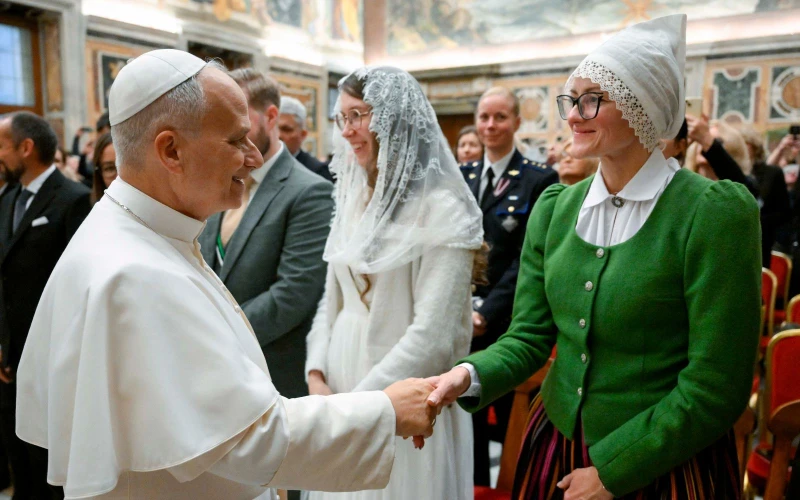

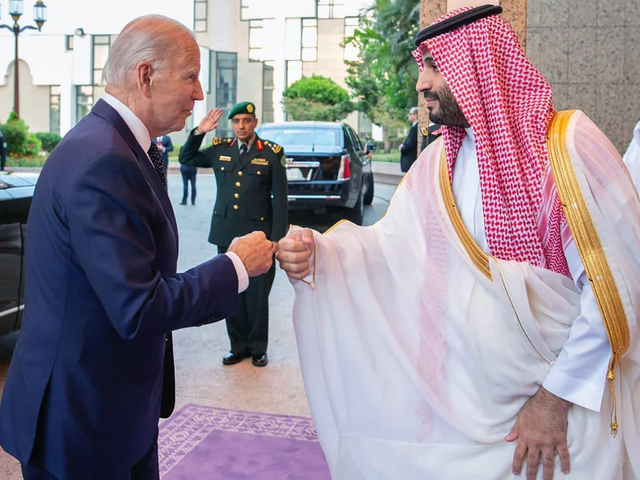


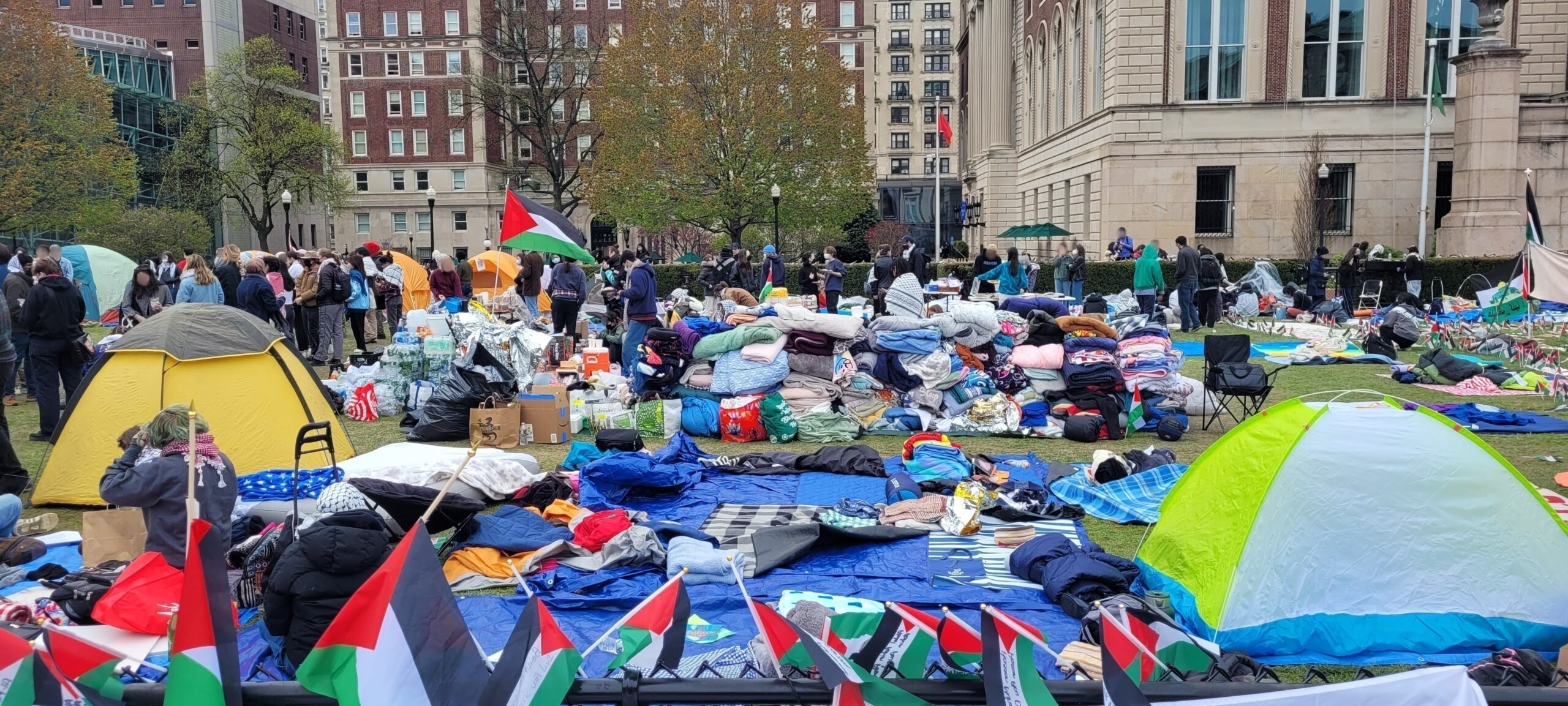


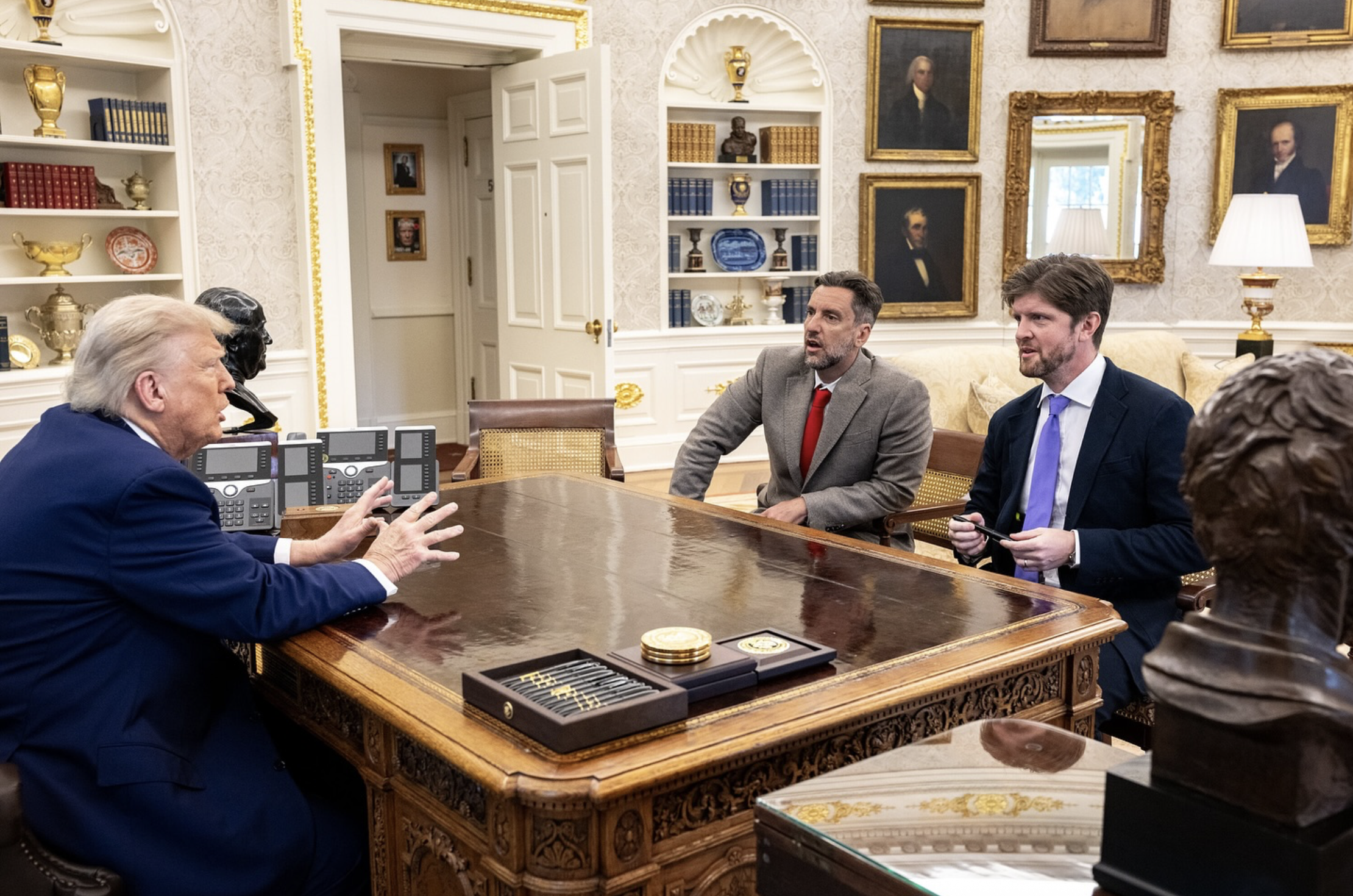


![16,000 teens attend Mass together to conclude NCYC #Catholic
Priests process into Lucas Oil Stadium on Nov. 22, 2025, for the concluding Mass in Lucas Oil Stadium at the National Catholic Youth Conference in Indianapolis. / Credit: Tessa Gervasini/CNA
Indianapolis, Indiana, Nov 24, 2025 / 10:35 am (CNA).
The 2025 National Catholic Youth Conferences (NCYC) concluded with a nighttime Mass drawing around 16,000 teenagers.After three days of prayer, community, sacraments, and a conversation with Pope Leo XIV, young Catholics packed into Lucas Oil Stadium in Indianapolis to end the conference with Mass on Nov. 22. Archbishop Nelson Pérez told CNA it was “beautiful” to celebrate the Mass alongside 25 of his brother bishops and more than 240 priests. “It’s the Church in its splendor,” Pérez said. “Tonight, we experienced the Church in its splendor.” The final Mass was celebrated on the Saturday before the solemnity of Christ the King. In his homily, Pérez said: “When I think about a king, I think about palaces and big thrones and power and authority.”“But when Jesus talks about king it’s … different,” Pérez said. “His throne is a cross. His crown is not made of gold and gems. It’s made of thorns. He doesn’t wear fancy, beautiful, priceless rings on his hands. He has nails.”The “very mystery of the life and the death of Christ, the King, and all of our lives is actually a dying and a rising — dying to sin, dying to the parts of our humanity that might be warped and wounded, and rising to new life to renewal of our soul.”Then “that process goes over and over over and over and over again until we die in Christ for the last time and then rise with him,” Pérez said. “How blessed, how filled with hope we are.”Pérez reminds teens: ‘Christ loves you just as you are’Pérez concluded his homily by tying his message back to what Pope Leo told the teens in his digital encounter with them on Nov. 21. Pérez told the teenagers Pope Leo spoke with them because he loves them.Pope Leo has “gathered with youth all over the place, especially this summer, [during] the Jubilee of Youth,” Pérez said. The pope’s “message is profound, powerful, and simple at the same time: ‘Christ loves you just as you are.’”Pérez reminded the crowd to listen to what the pope said to them. “Think of your closest friends. If they were hurting, you would walk with them, listen, and stay close,” the pope said. “Our relation with Jesus is similar. He knows when life feels heavy, even when we do not feel his presence, our faith tells us he is there.”“To entrust our struggles to Jesus, we have to spend time in prayer … We can speak honestly about what’s in our hearts,” Pérez said, quoting the pope. “That is why daily moments of silence are so important, whether through adoration, reading Scripture, or simply talking to him.”“‘Little by little, we learn to hear his voice, both from within and through the people he sends us. As you grow closer to Jesus,’ he said to us, ‘Do not fear what he may ask of you. If he challenges you to make changes in your life, it’s always because he wants to give you greater joy and freedom. God is never outdone in generosity.’”“The pope’s digital visit was what made this NCYC epic, really epic and different from any other,” Pérez told CNA. The success was from “the excitement of our youth to welcome the Holy Father” and Pope Leo’s “generosity and willingness” to speak with them. Being a part of the conference and seeing so many young Catholics at Mass together made Pérez feel “hopeful,” he said. “In a world and a country that’s so divided right now and violent at times, after this, I’m just so full of hope. It’s almost like we’re going to be OK.”“It’s incredible to see the young Church alive,” Pérez said. “It’s such a beautiful, beautiful gathering.”](https://unitedyam.com/wp-content/uploads/2025/11/16000-teens-attend-mass-together-to-conclude-ncyc-catholic-priests-process-into-lucas-oil-stadium-on-nov-22-2025-for-the-concluding-mass-in-lucas-oil-stadium-at-the-national-catholic-youth-co.webp)


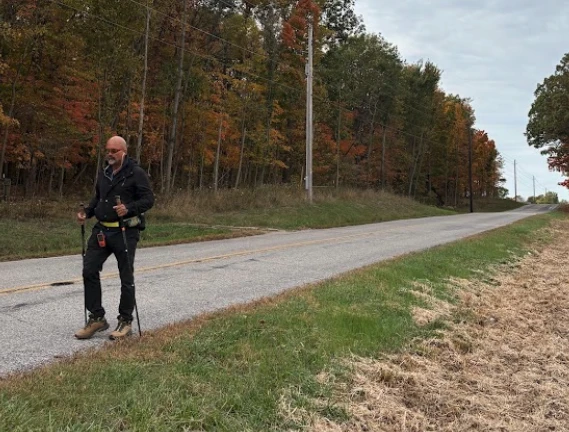






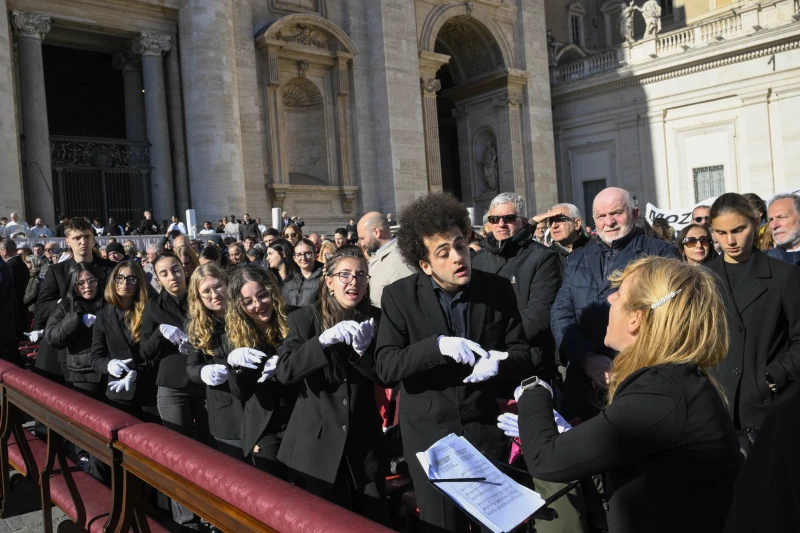




:max_bytes(150000):strip_icc():format(jpeg)/TAL-header-christmas-prelude-kennebunkport-maine-KNEPNKPRTXMAS1224-e945ee2949d3422982d9ac61e53730c6.jpg)
![Pastor installed at N.J.’s oldest parish in West Milford #Catholic - St. Joseph Parish in West Milford, New Jersey’s oldest Catholic faith community, marked three major milestones during a Mass with Bishop Kevin J. Sweeney on Nov. 16: the parish’s 260th birthday, the 120th anniversary of its current church, and the installation of its new pastor, Father Jakub Grzybowski.
The rural 300-family Passaic County parish lives that long legacy of faith through liturgical, spiritual, and religious-formation activities, social justice outreaches, and improvement and historical preservation projects. St. Joseph’s is also the oldest Catholic parish in the Paterson Diocese in New Jersey.
St. Joseph Church was filled as Bishop Sweeney served as the principal celebrant and homilist at the Mass. Many priests concelebrated, including Father Grzybowski and Father Zig Peplowski, pastor of St. Cecilia Parish in Rockaway, N.J., and a former pastor of the parish. A diverse congregation of current and former members of St. Joseph’s attended the liturgy.
Bishop Sweeney also installed Grzybowski as pastor during the Mass. The priest was named the parish’s administrator in 2019 and its pastor on March 19 this year.
Click here to subscribe to our weekly newsletter.
“Becoming pastor of St. Joseph’s fills my heart with profound gratitude and humility,” the Polish-born Father Grzybowski said. “What stands out about this parish is its beauty and its quiet, prayerful atmosphere. I love this church, its history, and the way it holds the memories of so many generations. Although it has suffered fires and undergone significant changes during various periods of reformation, the people today are working with tremendous dedication to restore the original character of the oldest church in New Jersey. Their love for this place is visible everywhere, and it inspires me daily.”
St. Joseph’s has embarked on projects to honor its history, such as reinstalling rediscovered altar rails from the earliest days of the current church, which opened in 1905, and installing new side altars to replace those removed years ago, as well as a new ambo. The parish also renovated its pastoral center.
The parish lives out its faith through Masses, Friday Eucharistic adoration, various religious devotions, Bible study, Generations of Faith religious formation, a food pantry, and Disciples of Christ, an evangelization and service group.
In 1765, German immigrants founded the Catholic settlement that became St. Joseph’s upon their arrival in the U.S. In time, Jesuit Father Ferdinand Farmer, also born in Germany, began riding horseback from his parish, St. Joseph in Philadelphia, Penn., to West Milford. In between his twice-yearly visits, these pioneers gathered in their homes to pray. Father Farmer stopped visiting in 1786, and no Masses were celebrated in the area for 25 years. Yet, the faithful continued to pray and catechize.
In 1829, the first church, dedicated to St. Luke, was built. Back in 1880, the renamed St. Joseph was considered a mission church, part of St. Anthony Parish in Butler, N.J., and was administered by Franciscan friars. They would include Father Mychal Judge, St. Joseph’s pastor from 1979 to 1985, and chaplain of the New York City Fire Department, who died in the terrorist attacks at the World Trade Center on Sept. 11, 2001.
In 1887, a larger church was built, but it was burnt to the ground in 1904. The current church opened in 1905. In 1956, the Sisters of Charity arrived to administer the parish school, which opened that year. The Franciscans returned the parish to the Paterson Diocese’s administration in 2003. The school closed in 2006.
“To now be installed as pastor in this Jubilee year celebrating 260 years of the parish and 120 years since the church’s rebuilding is meaningful,” Father Grzybowski said. “It feels like stepping into a living story of faith, resilience, and God’s ongoing presence.”
BEACON PHOTOS | JOE GIGLI
[See image gallery at beaconnj.org]](https://unitedyam.com/wp-content/uploads/2025/11/pastor-installed-at-n-j-s-oldest-parish-in-west-milford-catholic-st-joseph-parish-in-west-milford-new-jerseys-oldest-catholic-faith-community-marked-three-major-milestones-during.jpg)


















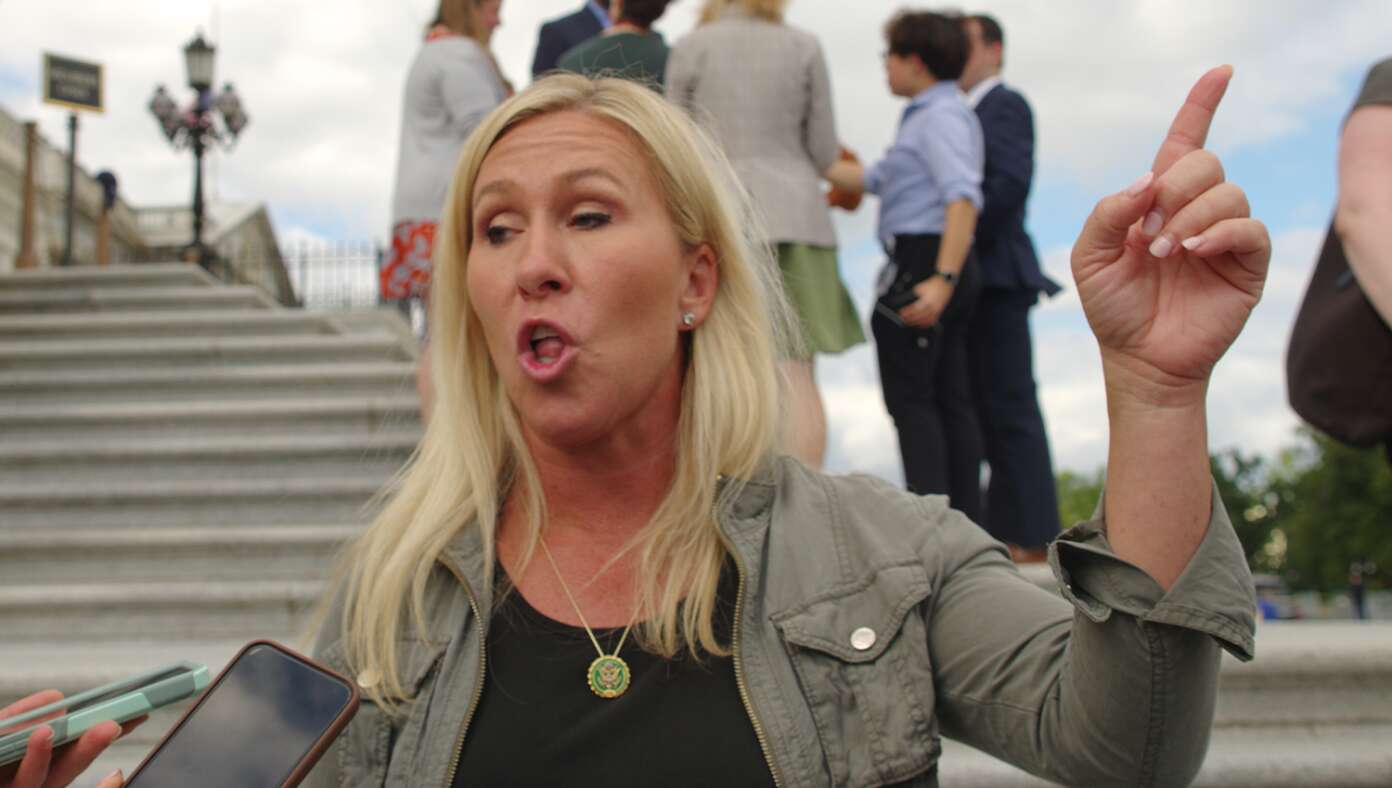


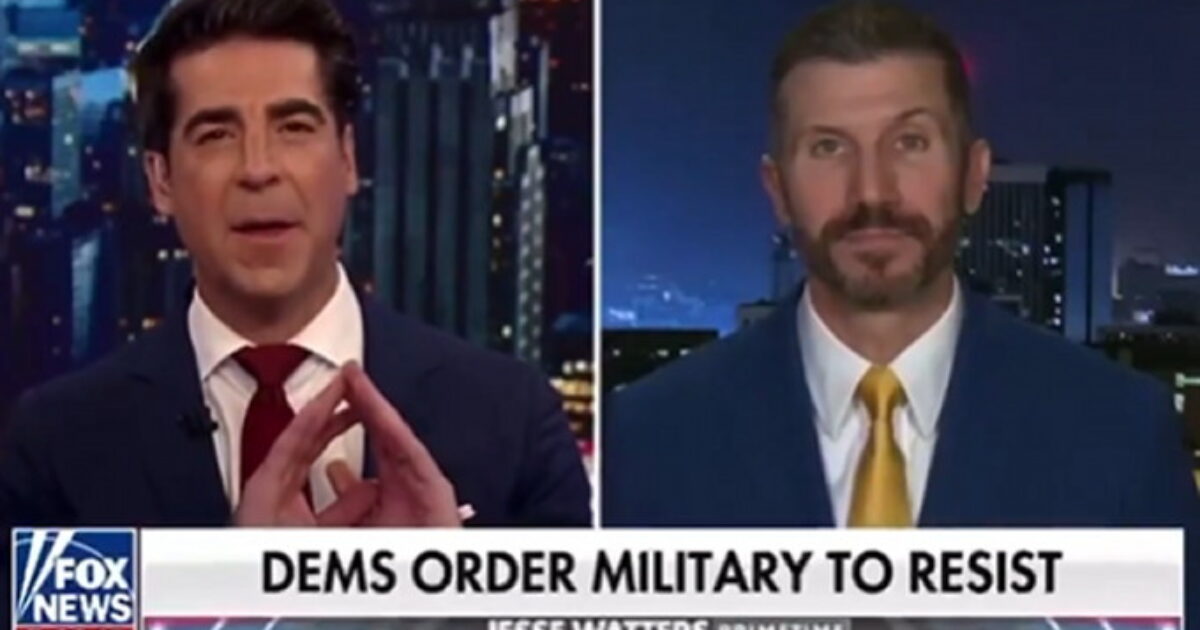




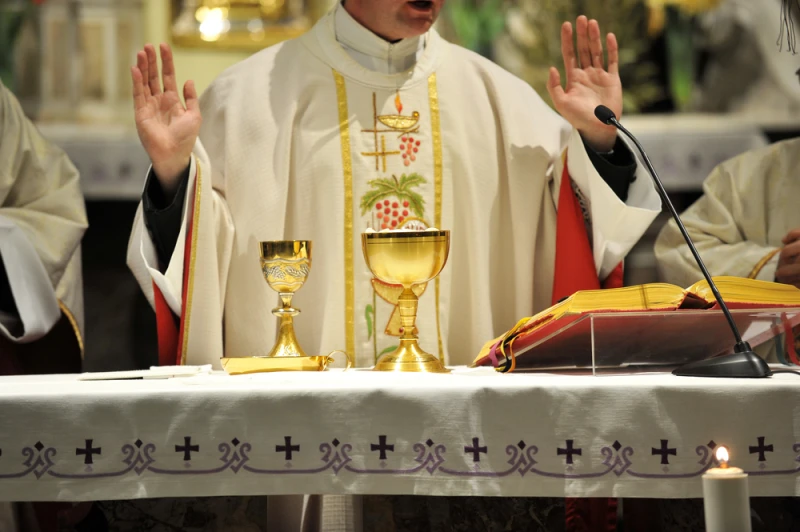

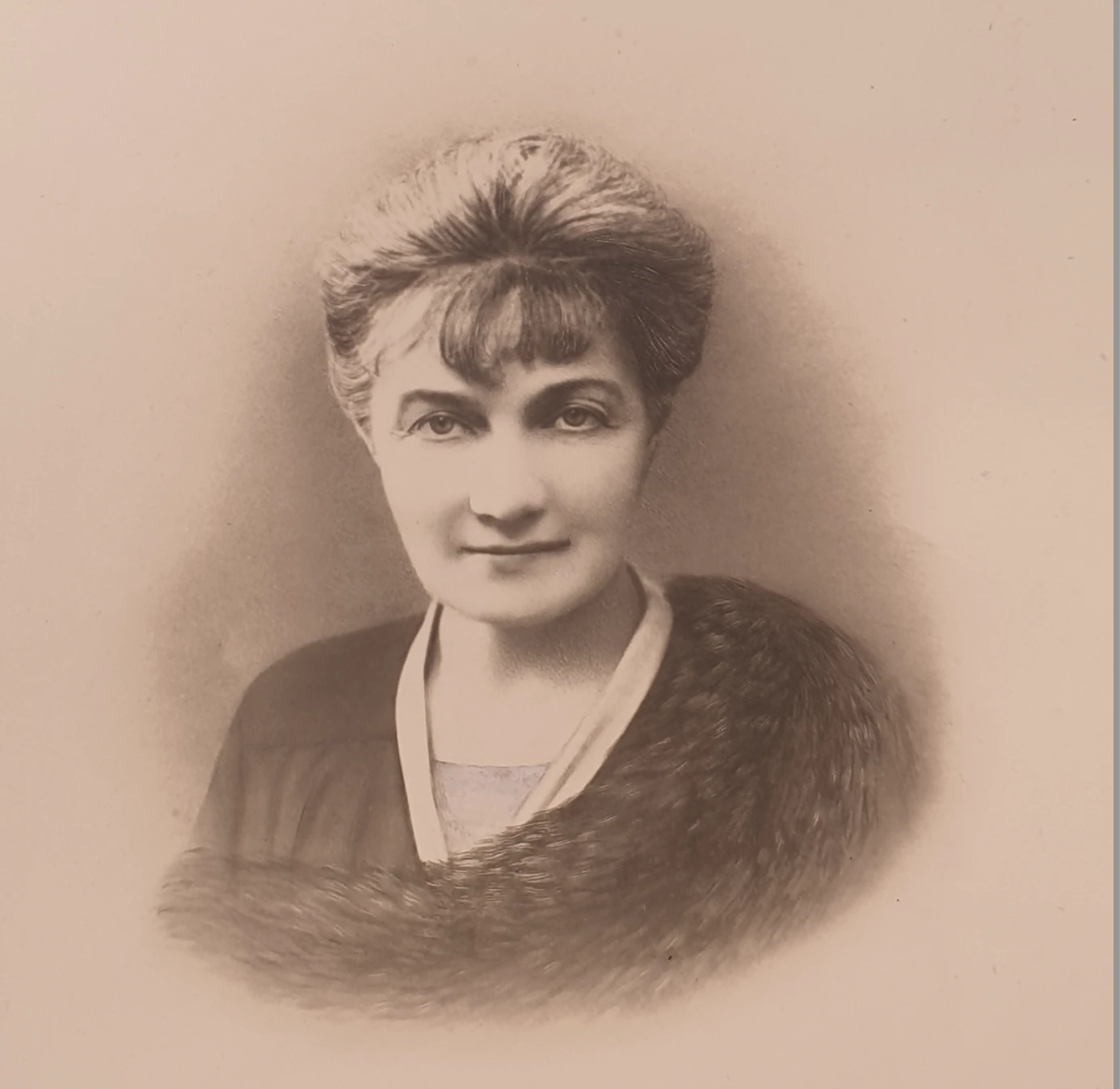






:max_bytes(150000):strip_icc():format(jpeg)/TAL-innsbruck-lead-image-FESTIVESKI1024-c31033e4aa124557a8c1ed5affbf5182.jpg)
![Pope Leo XIV warns against ‘false mercy’ in marriage annulment proceedings - #Catholic -
Pope Leo XIV holds an audience with the Roman Rota on Nov. 21, 2025, at the Vatican. / Credit: Vatican Media
ACI Prensa Staff, Nov 22, 2025 / 10:00 am (CNA).
In a firm call to avoid “false mercy” in marriage annulment proceedings, Pope Leo XIV reminded that compassion cannot disregard the truth.During a Friday audience with participants in the legal-pastoral training course of the Roman Rota, the Holy See’s court of appeals, the Holy Father read a lengthy speech in which he recalled the importance of the reform of marriage annulment processes initiated by Pope Francis 10 years ago.The pontiff emphasized that theology, law, and pastoral care must be understood in a harmonious way, not as separate or opposing areas, and pointed out that annulment proceedings are not merely technical procedures to obtain the “free status of persons” but rather an ecclesial service based on the search for truth and on family pastoral care.Judicial processes at the service of truthIn this context, Pope Leo stressed that ecclesial judicial processes must be “at the service of the truth” and also reiterated that “the mystery of the conjugal covenant” must be kept in mind.“A fundamental aspect of pastoral service operates in judicial authority: the diaconia [ministry] of truth. Every faithful person, every family, every community needs truth about their ecclesial situation in order to walk well the path of faith and charity. The truth about personal and community rights is situated in this context: the juridical truth declared in ecclesiastical processes is an aspect of existential truth within the Church,” he stated.Consequently, the Holy Father pointed out that “the sacred authority is participation in the authority of Christ, and its service to truth is a way of knowing and embracing the ultimate truth, which is Christ himself.”A manifestation of justice and mercyHe then recalled that in God’s judgment on salvation, “his forgiveness of the repentant sinner is always at work, but human judgment on the nullity of marriage cannot however be manipulated by false mercy.”“Any activity contrary to the service of the process of truth must certainly be deemed unjust. However, it is precisely in the proper exercise of judicial authority that true mercy must be practiced,” he emphasized.In this regard, Pope Leo XIV insisted that the process of matrimonial nullity can be seen as “a contribution by legal practitioners to satisfy the need for justice that is so deeply rooted in the conscience of the faithful, and thus to accomplish a just work motivated by true mercy.”“The aim of the reform,” he added, “which is to make the process more accessible and expeditious, but never at the expense of truth, thus appears as a manifestation of justice and mercy.”The pontiff also emphasized the urgency of ensuring realism in annulment cases and appealed to the responsibility of the judges of the Roman Rota. He thus encouraged them to view the institution of the judicial process “as an instrument of justice” in which there is “an impartial judge” and the aim is to seek “a great benefit for all concerned and for the Church herself.”He stressed the importance of making “efforts to promote reconciliation between spouses are very important, including, where possible, through the validation of the marriage.”“Behind the procedural technicalities, with the faithful application of the current legislation, the ecclesiological presuppositions of the matrimonial process are therefore at stake: the search for truth and the ‘salus animarum’ itself [the salvation of souls],” he noted.Synergy between justice and pastoral carePope Leo recalled in this regard that, in recent years, there has been “a growing awareness of the inclusion of the Church’s judicial activity in the field of marriage within the overall pastoral care of the family.”“This pastoral care,” he pointed out, “cannot ignore or underestimate the work of ecclesiastical tribunals, and the latter must not forget that their specific contribution to justice is a piece in the task of promoting the good of families, with particular reference to those in difficulty.”Thus, he emphasized that “the synergy between pastoral attention to critical situations and the judicial sphere has found significant expression in the implementation of preliminary investigations aimed at ascertaining the existence of grounds for initiating a case of nullity.”This story was first published by ACI Prensa, CNA’s Spanish-language news partner. It has been translated and adapted by CNA.](https://unitedyam.com/wp-content/uploads/2025/11/pope-leo-xiv-warns-against-false-mercy-in-marriage-annulment-proceedings-catholic-pope-leo-xiv-holds-an-audience-with-the-roman-rota-on-nov-21-2025-at-the-vatican-cred.webp)

